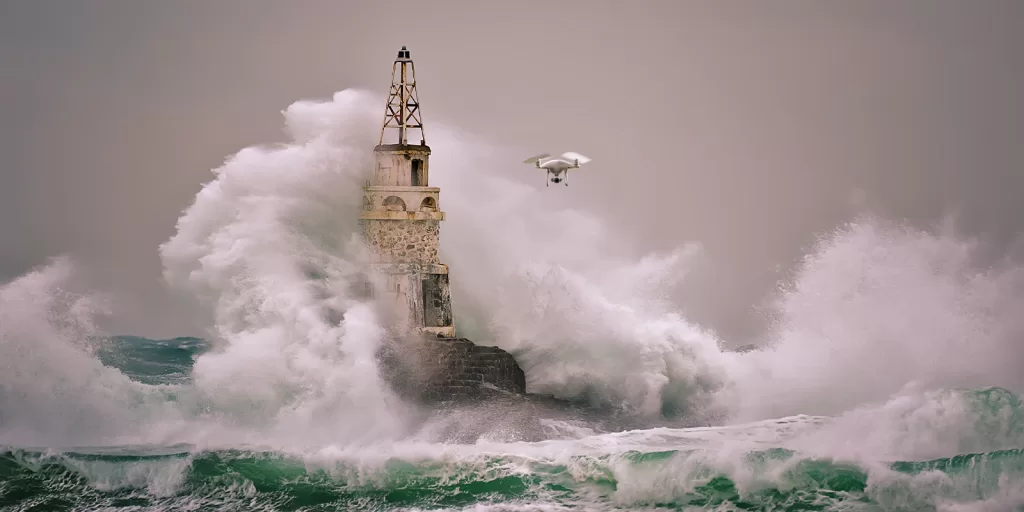
As a drone service provider, your job is all about taking your clients’ visions to new heights—literally. But with great elevation comes great responsibility. Before you hit that launch button, there’s one crucial question you need to ask yourself: Fly or No Fly?
This isn’t just about weather apps or pre-flight checklists. It’s about knowing the full picture of what could go wrong so you can make an informed decision. Risk assessment isn’t just a fancy phrase; it’s the foundation of safe, professional drone piloting. Let’s dive into why understanding the risks is essential and how it can make or break your operation.
Why Risk Assessment Matters
Flying a drone is exhilarating. But without understanding the risks, that thrill can quickly turn into a nightmare. Imagine launching your drone without noticing nearby power lines or underestimating strong winds. A small oversight can lead to big problems—injuries, property damage, or even losing your equipment.
The Cost of Oversight
The potential for harm isn’t just physical; it’s financial and professional too. Replacing a damaged drone or paying for property repairs can cost you thousands. More importantly, every flight reflects on your business. Clients trust you to deliver safe, high-quality results, and a single mistake can shatter that trust. A crash during a shoot doesn’t just ruin the day—it could lose you future contracts and tarnish your reputation in the industry.
Legal and Preparedness Considerations
Additionally, there are legal implications to consider. Flying without fully assessing risks can lead to violations of airspace regulations, resulting in fines or even the suspension of your license. Ignorance of these rules is no excuse, and the consequences can be severe.
Risk assessment also helps you stay prepared for unexpected challenges. What if your drone’s battery depletes faster than anticipated, or a sudden gust of wind sends it off course? By identifying risks beforehand, you’re more likely to have a backup plan in place, minimizing potential losses.
Ultimately, understanding the risks isn’t about being overly cautious—it’s about being professional. It shows your clients that you prioritize their safety, the quality of your work, and the longevity of your business. In a competitive industry, that level of care can set you apart from the rest.
Know What You’re Getting Into
Assessing risks before every flight is about more than safety; it’s about being prepared. Here’s a step-by-step guide to help you make the right call:
1. Environmental Factors
The environment is your first consideration when assessing risks. Whether it’s unpredictable weather, physical obstacles, or wildlife in the area, your surroundings can significantly impact the safety and success of your flight. Taking the time to evaluate these factors ensures you’re not caught off guard mid-flight.
- Weather Check: Is there wind, rain, or fog that could affect your drone’s stability?
- Obstacles: Are there power lines, trees, or tall buildings in your flight path?
- Wildlife: Are there birds or other animals that might see your drone as a threat?
2. Equipment Readiness
Your drone is only as reliable as the care and attention you give it before takeoff. Ensuring your equipment is fully operational and prepared for the mission is critical to avoiding unnecessary issues. A quick but thorough check can save you from costly mistakes.
- Battery Life: Do you have enough power for the entire flight and a safe return?
- Signal Strength: Are you in an area with strong GPS and no interference?
- Pre-Flight Inspection: Have you checked for loose propellers, worn parts, or software updates?
3. Human Factors
Even the best equipment can’t compensate for human error. Your skills, focus, and understanding of the rules are just as important as any technical preparation. Addressing these factors ensures you’re ready to handle the challenges of the flight.
- Skill Level: Are you comfortable with the maneuvers this job requires?
- Distractions: Are you focused and free from interruptions?
- Legal Awareness: Do you have the necessary permissions and know the local regulations?
4. Mission-Specific Risks
Every project comes with its own unique set of challenges. Tailoring your risk assessment to the specific requirements and conditions of the mission ensures you’re fully prepared. By aligning your approach with the client’s needs and the environment, you minimize surprises and deliver outstanding results.
- Client Expectations: Are their demands realistic for the conditions?
- Location Challenges: Are you flying over people, traffic, or private property?
- Backup Plan: If something goes wrong, do you have a contingency in place?
The “No Fly” Decision
It’s easy to feel pressured to deliver, especially when a client’s watching. But saying “no” to a flight isn’t a failure—it’s professionalism. A decision to ground your drone shows you’re putting safety and quality first. Clients will respect you more for being honest and cautious than for taking reckless risks.
Think of it this way: A “No Fly” decision today could be the reason your business thrives tomorrow. By demonstrating sound judgment, you build trust and credibility, which can lead to long-term partnerships. Clients want to work with someone who prioritizes their best interests, not someone who takes unnecessary gambles. It’s about the bigger picture—protecting your reputation and ensuring your business’s sustainability.
Saying “no” also gives you an opportunity to educate your clients. When you explain the risks and the reasoning behind your decision, they’ll gain a greater appreciation for your expertise and the complexities of drone piloting. This transparency can turn a potential disappointment into an opportunity to strengthen your relationship.
Make It Personal
Think about your “why.” Why did you start flying drones? Maybe it’s the joy of creating stunning visuals or the excitement of mastering cutting-edge technology. Whatever your reason, don’t let a preventable accident ruin it. Taking the time to assess risks ensures you can keep flying, keep creating, and keep growing your business.
Your personal “why” can also serve as a guide when making tough decisions. Remembering why you fell in love with drone piloting can help you stay focused on what truly matters: producing high-quality work, maintaining your integrity, and keeping the skies safe for everyone. By making safety a core part of your workflow, you’re not just protecting your business—you’re honoring the passion that got you started.
The Takeaway
Every flight starts with a choice: Fly or No Fly? When you take the time to identify risks, you’re not just avoiding accidents—you’re building trust, protecting your gear, and safeguarding your business.
So before your next flight, ask yourself: Do I really know what I’m getting into?
The skies are calling, but only when it’s safe to answer. Fly smart, fly safe, and keep soaring.
If you have any questions, let us know! If you’d like to hire us, you can get more information here.
Written by: Tony Marino, MBA – FAA Certified Part 107 Commercial Drone Pilot and Chief Business Strategist at Aerial Northwest
Disclaimer: The information provided in this blog post is for general informational purposes only and should not be construed as legal advice.
Resources
- FAA Resources: FAA DroneZone
- Article: 4P’s for Successful Drone Service Marketing
- Article: What Is Risk Management & Why Is It Important?
Starting Your Own Drone Service Business
Pick up your copy today on Amazon and wherever fine books are sold.
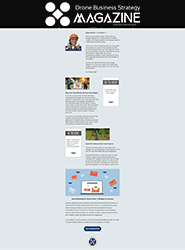
DRONE BUSINESS STRATEGY MAGAZINE
A free digital publication made exclusively for all small business drone pilots to them help start-up, become profitable while sustaining a competitive advantage within the drone service industry sector they opt to serve.
“If you love to fly, we’d love to have you come aboard!”
We share your information with no one. Our Privacy Policy.


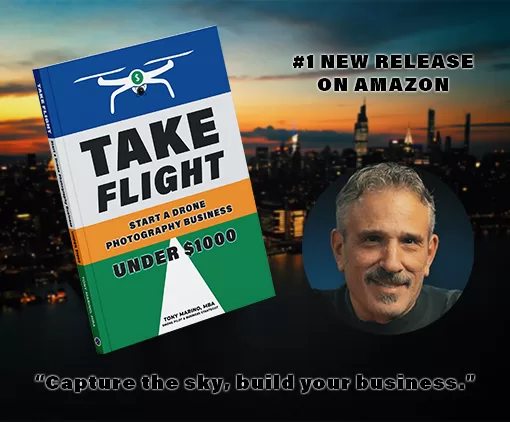
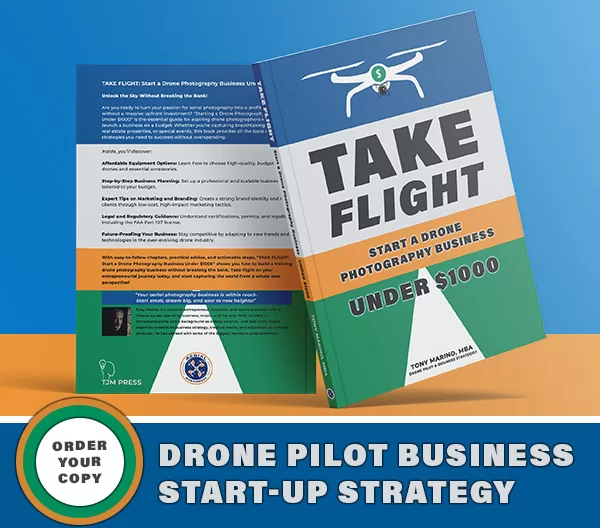





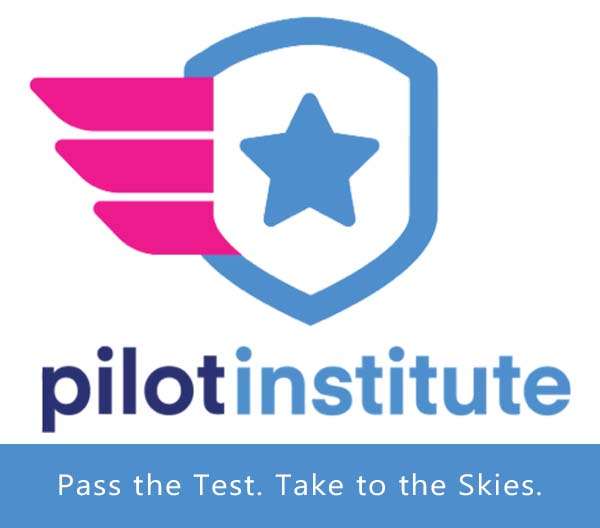
Leave a Reply
Your email is always safe with us.